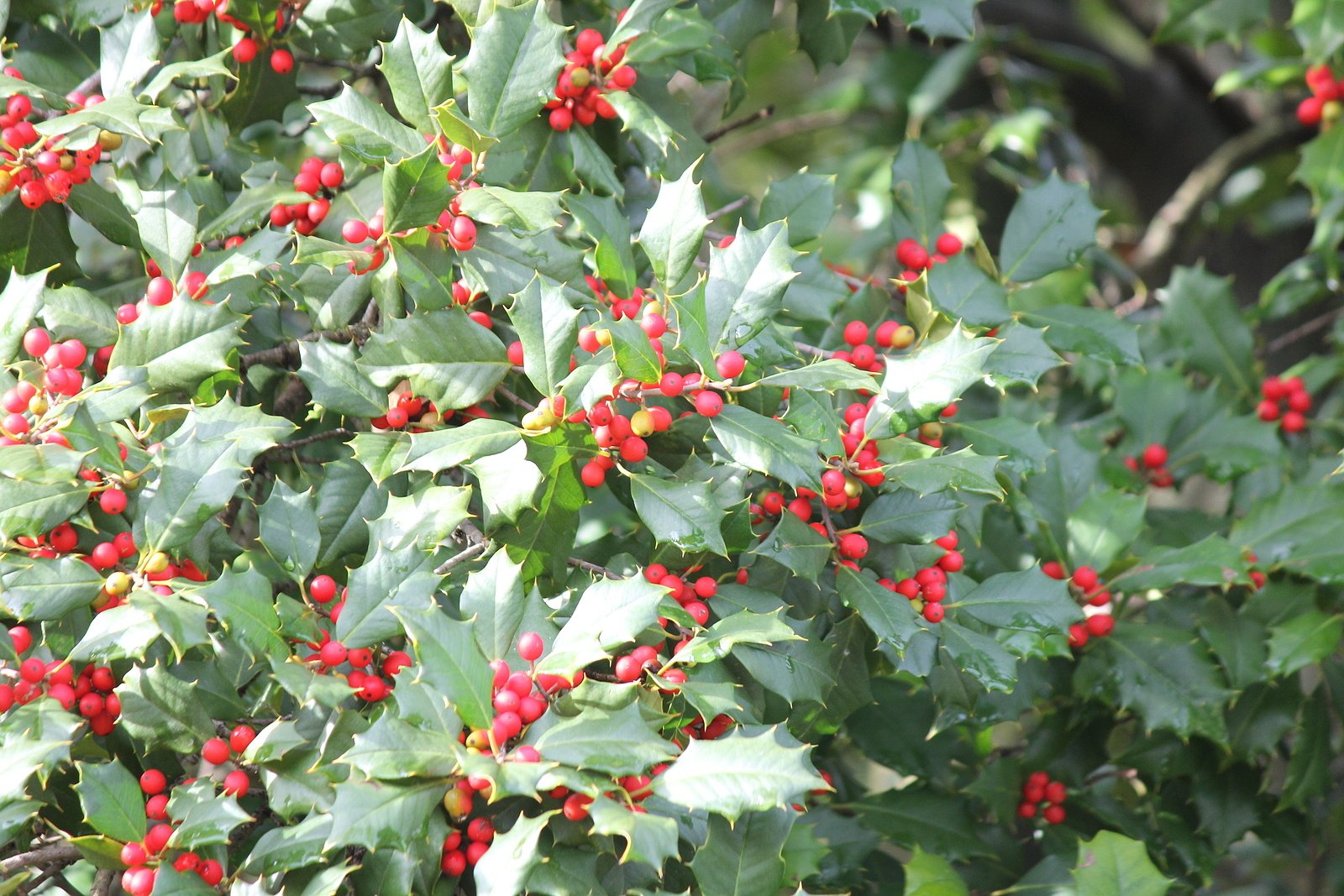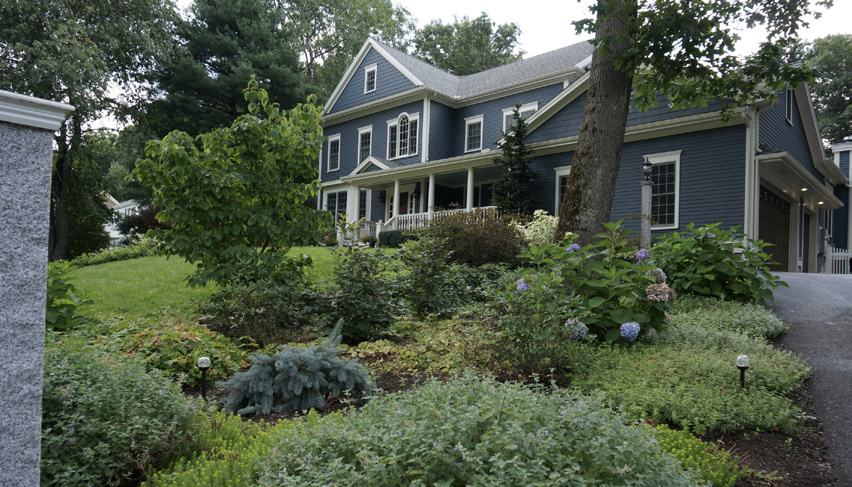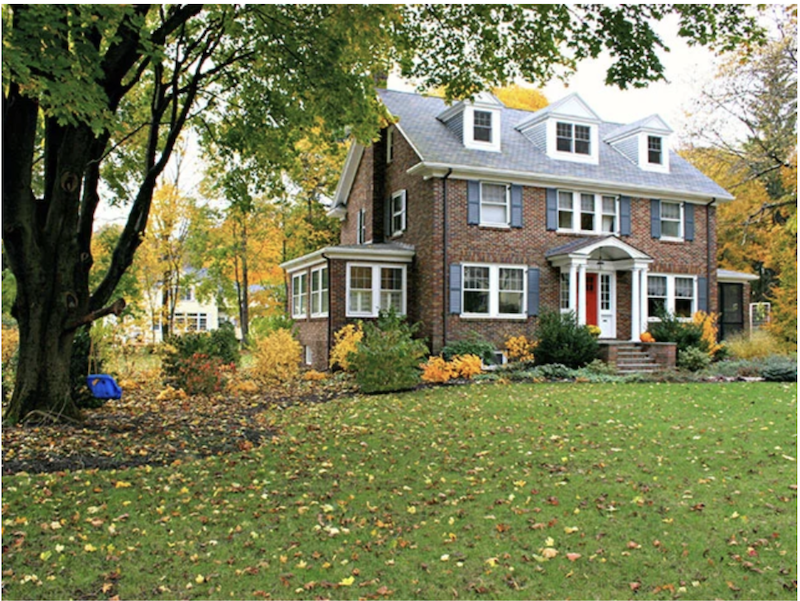This time of year is when our lawns can look particularly lush and inviting. But, if not very careful, homeowners can find themselves with a very serious weed problem on their hands, quickly discovering that lawn care involves a lot more than simply mowing each week.
Those of us who desire a healthy lawn must be on the lookout for pesky weeds as they begin germinating and growing, before they take over our yards, gardens and flower beds.
When you learn how to identify some common weeds, weed control becomes much easier. With a little know-how, you can be confident when it comes to keeping watch over your lawn from early spring all the way into the fall.
Types of Lawn Weeds
There are many different weeds to look out for, but they can be better understood if they are sorted into similar groups.
Broadleaf Weeds
Broadleaf weeds are weeds that can be distinguished from grassy or grass-like pest plants. Often with broad, veined leaves, this category of weeds encompasses a large number of undesirable plants ranging from plantain to dandelion.
Grassy Weeds
Grassy weeds are any types of grasses growing in your lawn that you either didn’t plant or don’t wish to grow. The most common grassy weed is crabgrass, which spreads easily in a sprawling manner. Grasses are closely related to sedges, but can be identified by their flat or round stems.
Sedges
Sedges look very similar to grasses, but are distinguished from them by their triangular stems. Growing in grassy formations, this type of perennial weed can grow thickly and quickly all year long, making them difficult to get rid of.
What Causes Lawn Weeds to Grow?

Weed control is an incredibly common hurdle that homeowners must overcome when creating a beautiful lawn. There are many factors that can lead to weed growth in your lawn and garden, and for each problematic cause, there is a solution that can get you on track to achieving a more beautiful lawn.
Poor soil health is a major cause of weed growth. Soil health can suffer for a number of reasons, caused by physical or chemical imbalances.
Soil can easily become too compacted, restricting the growth of root systems of desired plants, allowing weeds to run rampant. If soil is compacted too firmly, either from natural causes such as driving rain, or from inflicted compression from heavy machinery traveling over an area, consider treating compaction by aerating your soil. This can be done with hand tools or machines that can be purchased or rented from local lawn and garden services.
Soil health can also suffer from a lack of nutrients in the soil or from imbalances in pH levels. You can learn more about the health of your soil through a soil sample test. These tests can help you to determine what your soil needs to grow a healthy lawn with as few weeds as possible.
Amending your soil to make up for a nutrient deficiency can sometimes be as simple as dressing your lawn with a high-quality compost. If you need a more specific treatment plan, the results of your soil test can point you in the right direction, letting you know what precise nutrients you need to incorporate. Or, in the case of pH, whether you need to add acidifying, neutralizing, or basifying elements to your soil.

Inadequate lawn care practices are another factor that can cause weeds to grow in your lawn. Not caring for your lawn in an efficient way can lead to poor lawn health. Mowing your grass too low in order to mow less often can allow weeds to overtake your lawn. Try raising your mower deck’s height a bit and see if your yard’s composition improves.
Grass can be weakened through overwatering or underwatering, allowing it to be overtaken by a variety of weeds. Making sure to give your lawn the correct amount of water during these hottest months of the year is one of the keys to maintaining a healthy lawn with as few weeds as possible.
Inconsistent fertilization also contributes to inadequate lawn care, allowing weeds to grow. Keeping a fertilization schedule that has the ability to maximize healthy lawn growth is key to keeping your lawn healthy.
There are also environmental factors that can cause weeds to grow. Weeds, like desirable plants, require certain environmental conditions to thrive. Factors such as direct sunlight, shade, temperature, and moisture will influence which weeds will grow in your yard, and where.
Lastly, lack of competition can majorly affect the growth of weeds in your lawn. Unhealthy, sparse lawns allow weeds to thrive, while lush, healthy lawns give weeds less space to grow. Weeds can sneak up on you during your grass’s time of dormancy as well, becoming established during the time of the year when your lawn isn’t actively growing.

Remember that weeds happen to everyone, and can show up at any time, but with some amendments you’ll be able to regain your beautiful, lush lawn.
Common Lawn Weeds in Massachusetts
There are lots of different weeds in our area, and below are 10 common lawn weeds here in Massachusetts:
Dandelion

The dandelion is a broadleaf weed that is found across much of the US. This weed, though edible and medicinal, is widely maligned. The dandelion has toothy leaves, a deep tap root, and a bright yellow blossom that fades to white, with many seeds that are spread by the wind, giving the dandelion the ability to multiply quickly.
Crabgrass

Crabgrass is a member of the grassy weed family, and has a rough, distinct texture when found amongst softer lawn grasses. It can often be found crawling onto walkways during hot weather, as its stems spread and grow even during extreme heat.
White Clover

White clover, with its distinct three-lobed green leaves, is another broadleaf weed that has its uses, as it is a nitrogen fixer and is good forage for many pollinators, but stands out sharply in a lawn and can grow even during periods of drought when grasses are dormant. Once white clover becomes established, it is hardy and can be difficult to get rid of, so it is best to dig up and be rid of this weed when it is first noticed.
Chickweed

Chickweed is a broadleaf weed that often thrives in compacted soil, thanks to its shallow roots. If left to grow through a complete cycle, each plant can produce thousands of seeds, making future generations of chickweed difficult to eradicate.
Ground Ivy

Ground ivy goes by many names: This broadleaf weed is sometimes also called creeping charlie or catsfoot, and is very fast-growing. It is found mostly in shaded areas with compacted soil, and thanks to its shallow roots, can be pulled up easily.
Plantain

Plantain, a broadleaf weed with several varieties. It is useful for people interested in herbal remedies, but can quickly take over a lawn. Each plant can produce a great number of seeds, so it is essential to remove the entire plant when it is identified, without waiting until it flowers.
Nutsedge

The nutsedge is a perennial sedge weed that comes back year after year thanks to its prolific seeds paired with its underground rhizome root system that can be quite deeply established.
Oxalis

Oxalis falls under the broadleaf weed category, and is a quickly spreading ground cover. This weed can quickly get out of hand, as it has pleasant-looking foliage and flowers that are appealing to many until one realizes how quickly this weed can overtake an ailing grassy area.
Quackgrass

Quackgrass spreads by seeds and rhizome, and can form very thick patches, sometimes making it a difficult grass to pull and dig.
Spurge

Spurge is a broadleaf, annual weed that can spread incredibly quickly during particularly hot periods, when the growth of your grass is stunted. Not only will spurge grow in any available area of lawn, but also pops up easily through mulch and in sidewalk cracks.
Dealing with so many weeds can seem a daunting task, but knowing what to be on the lookout for is a great first step in dealing with these common weeds. A great resource in tackling these pesky plants is a professional landscape company. They have the experience to manage and prevent weeds efficiently, and in a way that is gentle on the environment and keeps the health of your local ecosystem and family in mind.
To learn more about the best ways to care for your lawn and landscape, please download our free ebook. How to Maintain Your Landscape and Transform It Into a Beauty You'll Love.


















































